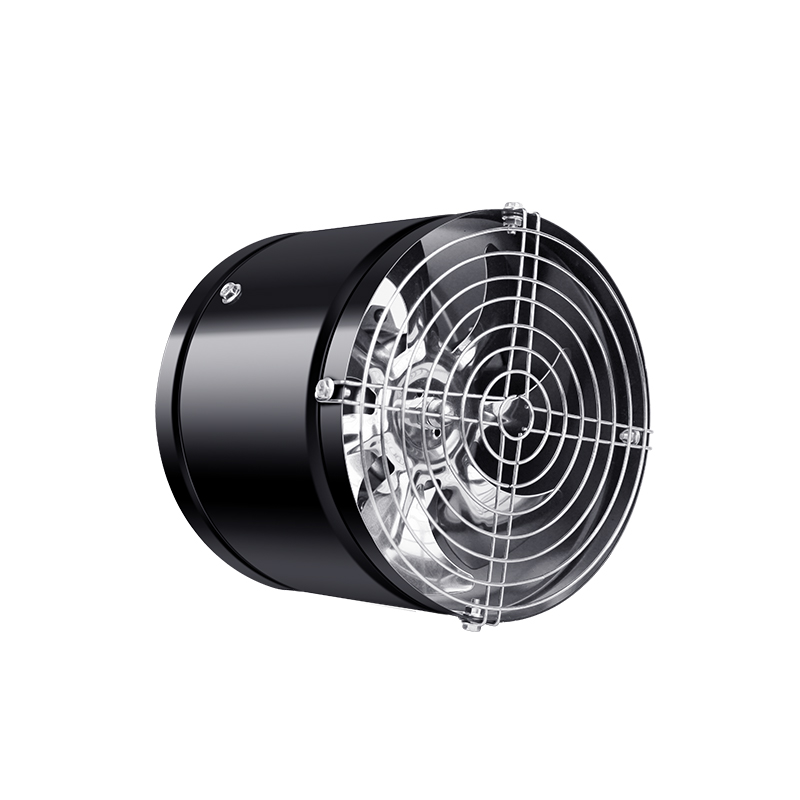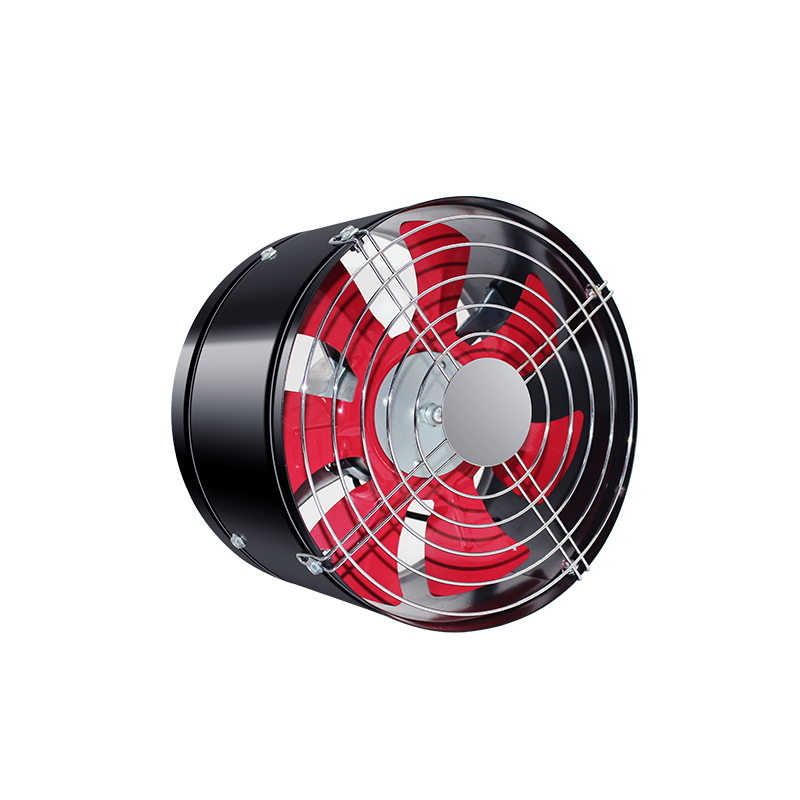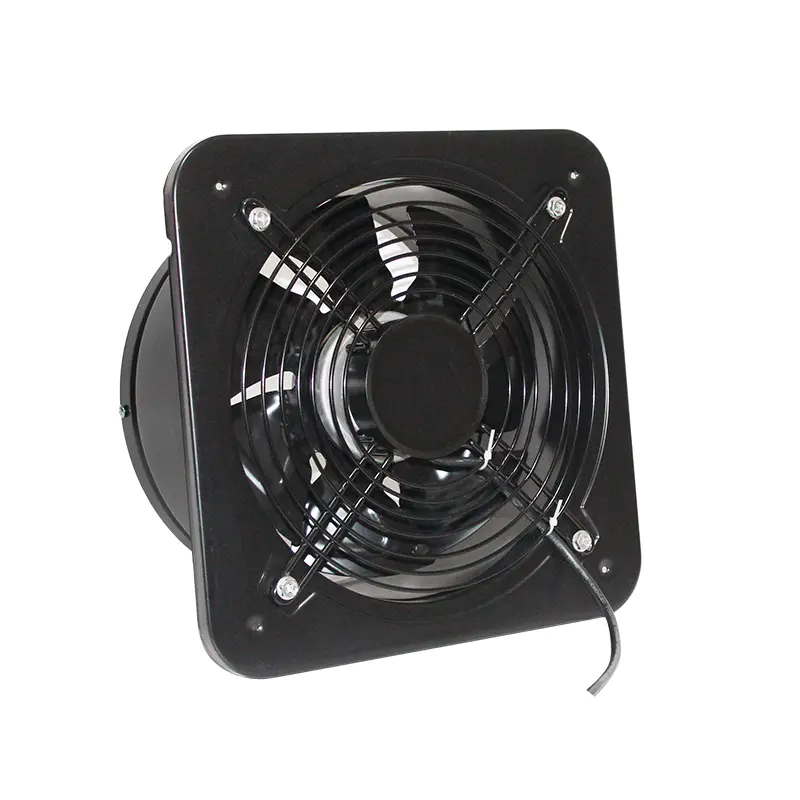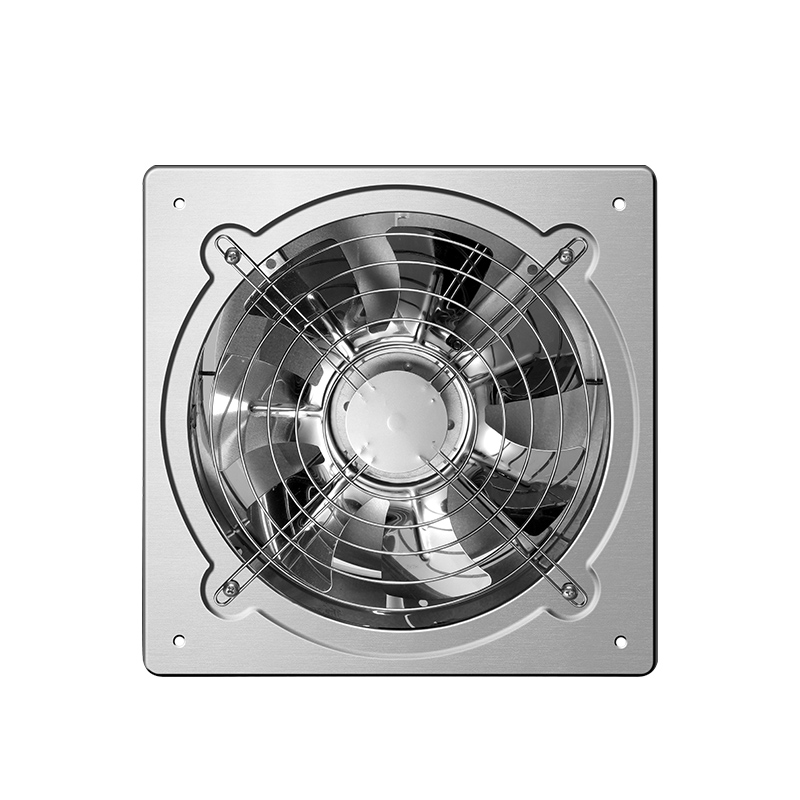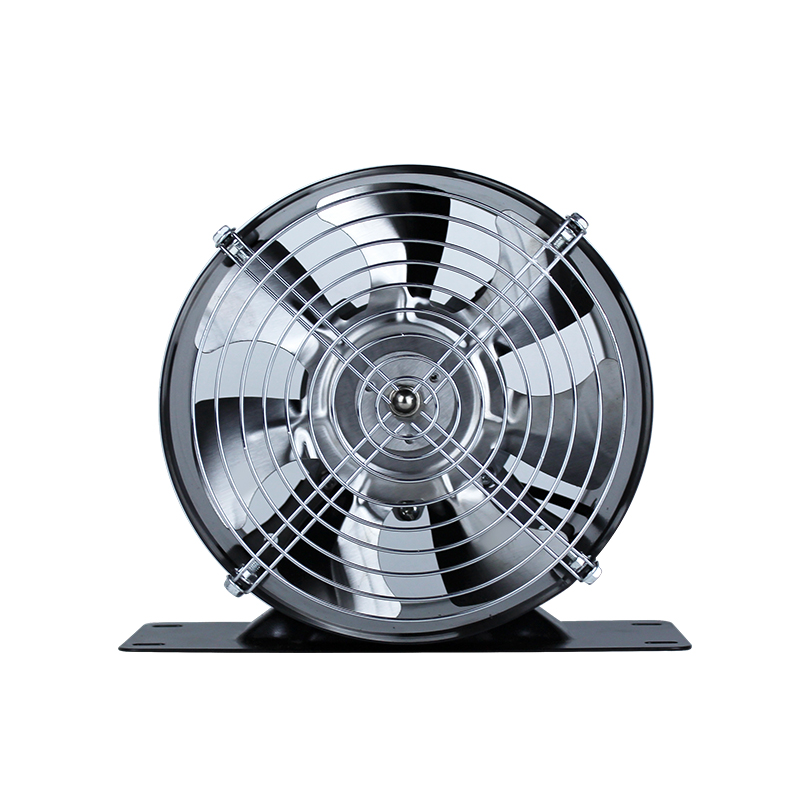News
Efficient Ventilation Solutions: A Guide to Choosing the Right Axial Flow Ventilation Fans for Your Needs
Understanding Your Ventilation Needs
Before selecting any ventilation equipment, you must first understand your specific needs, as this determines which fan is best for you. Axial Flow Ventilation Fans are widely used precisely because they perform so well in many specific scenarios.
1.1 What Are Axial Flow Ventilation Fans?
The core feature of Axial Flow Ventilation Fans is that the direction of airflow is parallel to the axis of the fan blades. You can think of it as an airplane propeller; it efficiently pushes a large volume of air in one direction. This design makes it ideal for ventilation applications that require high airflow and low pressure.
Compared to other fan types (like centrifugal fans), axial flow fans have the following distinct advantages:
- Compact Structure: Small in size and easy to install on walls, ducts, or roofs.
- High Airflow: Capable of generating a huge volume of air in a small footprint.
- Low Energy Consumption: Simple structure, high operating efficiency, and relatively energy-saving.
| Characteristic | Axial Flow Ventilation Fans | Centrifugal Fans |
| Pressure | Low | High |
| Airflow | High | Lower |
| Use Cases | Ventilation, exhaust, cooling | Duct boosting, material conveying, air handling |
| Structure | Simple; blades push air directly | Complex; changes airflow direction via centrifugal force |
| Installation | Flexible; often used in walls, ducts | Requires a solid foundation; typically used in duct systems |
1.2 Understanding Common Application Scenarios
Understanding your application scenario is key to choosing the right fan. Due to their characteristics, axial flow fans are particularly well-suited for the following types of ventilation:
- Industrial Exhaust Fans: In large spaces like factory workshops, warehouses, farms, and greenhouses, Axial Flow Ventilation Fans are often used as the main exhaust equipment. They can effectively remove hot, humid, or contaminated air from indoors and bring in fresh air, thereby improving the working environment.
- Warehouse Ventilation Solutions: In tall, spacious warehouses, heat and pollutants accumulate at the top. By installing large axial flow fans on the roof or high up on walls, this hot air can be quickly expelled, solving the "heat island effect" and maintaining constant air circulation to protect goods and equipment.
These specific applications rely on the high-airflow, low-pressure nature of axial flow fans to ensure efficient and uniform air circulation in large spaces.
Choosing the Right Ventilation Equipment
Once you understand your ventilation needs, the next step is to choose the most suitable Axial Flow Ventilation Fans for your specific situation. This is more than just picking a fan; it's a decision based on scientific parameters and application scenarios.
2.1 The Importance of Performance Parameters
When choosing an axial flow fan, the most important thing to look at is its performance parameters, as these numbers directly determine whether the fan can meet your ventilation goals. Here are a few key parameters to focus on:
- Airflow (CFM or m³/h): This is the volume of air the fan moves per unit of time. It determines the speed of ventilation. You need to calculate the required airflow based on the volume of your space to ensure a complete air exchange can be completed within the ideal time frame. For example, if a workshop needs 10 air changes per hour, you must calculate the total airflow requirement.
- Air Pressure (Pa): This is the fan’s ability to overcome resistance (such as ducts, filters, etc.). Axial Flow Ventilation Fans typically generate low pressure, so they are best suited for open spaces with no ducts or short, straight ducts.
- Energy Efficiency Ratio (EER): This parameter measures the power consumed by the fan to provide the same amount of airflow. Choosing a fan with a high EER can help you save on long-term operating costs.
It's worth mentioning a special category of fans—High Volume Low Speed Fan (HVLS fans)—which are a variant of axial flow fans. These fans have large blades and low rotational speeds, and are specifically designed to create powerful airflow in large spaces with minimal energy consumption.
| Parameter | Traditional High-Speed Fans | High Volume Low Speed Fans (HVLS) |
| Airflow | High, but concentrated in front of the blades | Huge, covering the entire area |
| Air Speed | High, may cause localized strong drafts | Low, provides a gentle and widespread breeze |
| Energy Consumption | High | Low, very energy-efficient |
| Noise | High | Low |
| Application | Local ventilation, smoke exhaust | Large-area ventilation, summer cooling, winter heat recovery |
2.2 Technology Integration and System Optimization
Modern ventilation solutions are not just single fans but systems integrated with other technologies.
- HVAC Air Movers: Axial Flow Ventilation Fans are often integrated into more complex HVAC (Heating, Ventilation, and Air Conditioning) systems as a core component for air movement. They can work with air conditioners, heaters, or air filters to ensure smooth airflow throughout the system and improve overall efficiency.
- Smart Control Systems: To achieve optimal energy efficiency and automated management, many modern axial flow fans can integrate with temperature and humidity sensors, timers, and even smart control panels. These systems can automatically adjust the fan speed based on environmental changes, ensuring adequate ventilation when needed and reducing energy consumption when not, thereby achieving truly smart ventilation.
By comprehensively considering these performance parameters and technological integrations, you can choose the most suitable Axial Flow Ventilation Fans and integrate them into an efficient and energy-saving ventilation system.
Strategies for Achieving Efficient Air Circulation
Having the right Axial Flow Ventilation Fans is not enough; scientifically installing and maintaining them is the key to achieving the best ventilation results. A well-planned system can maximize the fan's effectiveness and ensure long-term stable operation.
3.1 Planning for Large Scale Air Circulation Systems
To achieve truly efficient Large Scale Air Circulation, you need to treat the ventilation system as a whole. Here are some important planning principles:
- Fan Layout and Quantity: The number and position of fans should be determined by the volume and shape of the space, as well as the location of heat or pollution sources. For example, in a rectangular warehouse, a "push-pull" layout can be used, installing intake fans at one end and exhaust fans at the other to create an overall airflow. This is much more effective than simply installing a few random fans.
- Airflow Patterns: Ensure that the airflow covers the entire area and avoids "dead zones." In planning, consider obstacles, equipment, and work areas to ensure the airflow can move around them and circulate evenly.
- Combining HVLS and Traditional Fans: In some large spaces, different types of fans can be combined. For example, large High Volume Low Speed Fan can create an overall airflow that covers a vast area, while smaller Axial Flow Ventilation Fans can be used for local exhaust or to provide cooling for specific equipment.
| Layout Strategy | Applicable Scenarios | Advantages | Disadvantages |
| Push-Pull | Rectangular workshops, warehouses | Creates strong, controllable overall airflow | Requires space for installation at both ends |
| Decentralized | Spaces with many obstacles, irregular shapes | Flexible, can solve local problems specifically | Airflow may be uneven, lower efficiency |
| Roof Exhaust | Industrial plants, greenhouses | Utilizes the principle of rising hot air for efficient heat removal | Requires specific roof structures |
3.2 Maintenance and Longevity
Even the most efficient Axial Flow Ventilation Fans will see their performance diminish without proper maintenance. Regular maintenance ensures the equipment operates efficiently and safely and extends its lifespan.
- Regular Cleaning: Dust and dirt accumulated on fan blades increase the fan's load and reduce efficiency. Blades should be cleaned regularly, especially in dusty or oily environments.
- Motor and Bearing Checks: Listen for unusual noises during fan operation, which may signal worn-out motors or bearings. Regularly lubricating bearings can reduce friction and extend their lifespan.
- Fastener Inspection: Periodically check all screws and fasteners for looseness. The vibrations generated by a fan during high-speed operation can cause components to loosen; tightening them in time can prevent equipment damage and safety hazards.
By following these strategies, you can ensure that your ventilation system not only operates efficiently from the start but also continues to provide you with stable and reliable air circulation for many years to come.
Conclusion
Axial Flow Ventilation Fans are more than just simple air-moving devices; they are core tools for solving complex industrial and commercial ventilation challenges. From improving air quality to regulating temperature and protecting equipment and employee health, choosing and implementing the right ventilation solution is vital for any operational environment.
We have explored how to select the right Axial Flow Ventilation Fans based on various performance parameters and how to integrate them into an efficient ventilation system. Understanding their core advantages—high airflow, low pressure, and compact structure—is the first step toward making an informed decision.
Ultimately, a successful ventilation strategy depends on three key elements:
- Precise Needs Analysis: Define your ventilation goals and application scenarios, whether for industrial smoke extraction or warehouse air circulation.
- Scientific Equipment Selection: Based on parameters like airflow, pressure, and energy efficiency, choose the most suitable equipment, for example, opting for a High Volume Low Speed Fan when large-scale air circulation is needed.
- System Planning and Maintenance: Scientifically plan the fan layout and perform regular maintenance to ensure the system operates efficiently for the long term.
| Step | Key Action | Expected Outcome |
| Needs Analysis | Assess space volume, pollutants, and heat sources | Determine required total airflow and pressure |
| Equipment Selection | Compare performance and energy efficiency of different fans | Find equipment that is energy-efficient and performance-matched |
| System Planning | Scientifically lay out fans, consider airflow patterns | Eliminate ventilation dead zones, achieve uniform circulation |
| Routine Maintenance | Regularly clean, check, and lubricate | Extend equipment lifespan, maintain optimal performance |
By following these principles, you can ensure your ventilation system provides the best return on investment and creates a healthier, safer, and more comfortable future for your work environment.
Frequently Asked Questions (FAQ)
1. Which industries are the axial flow fans produced by your company mainly applied to?
Our products are widely used. Shengzhou Qiantai Electric Appliance Co., Ltd. is a professional enterprise specializing in the design, production, and sales of exhaust fans, ventilation fans, axial fans, and industrial fans. Our products are certified by the China Quality Certification Center and are widely used in home kitchens, restaurants, factory workshops, warehouses, and pipeline exhaust/cooling systems, among various other locations.
2. Why choose axial flow fans from Shengzhou Qiantai Electric Appliance Co., Ltd.?
Our company is located in Shengzhou City, Zhejiang Province, known as "the town of Yue opera" and "the town of motors." We possess strong technical expertise, a robust capability for independent innovation, advanced production and testing equipment, and a perfect management system. We always adhere to the principle of "reliable product quality and user experience" and are committed to providing customers with excellent, energy-saving products.
3. What is the corporate philosophy of Shengzhou Qiantai Electric Appliance Co., Ltd.?
Our company adheres to the concept of "customer first, employees second, shareholders third." We continuously innovate and strive to contribute to the development of China's fan industry. We warmly welcome friends from all walks of life at home and abroad to visit us and discuss cooperation!


 English
English 中文简体
中文简体

